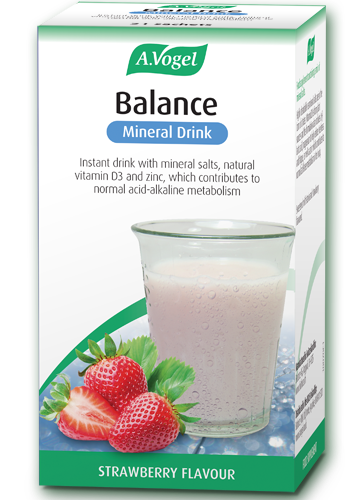Did you know?
Peanut butter is a great food to fuel up on before a 5K or 10K because of its low GI, high carbohydrate and high protein content.
What to eat before a 5K or 10KSo you’ve decided you want to undertake the gruelling but rewarding challenge of endurance running – but where do you start? Running can be intimidating for new runners, especially when it feels like you can’t run for more than a minute or two without getting worn out. Today I’m going to be talking about what distance you should aim for, how to increase your stamina, and how to prepare for your run.
Different people have different ideas of what ‘endurance’ means – to some it’s a 5K, to others it’s a marathon, and to some it’s a run that takes several days and covers large distances such as the West Highland Way or John o’ Groats to Land’s End.
However, the generally accepted definition of an endurance run is anything over 3 kilometres – in other words, not a sprint.
This can be a tricky question to answer because it all depends on how naturally fit you are, and what other forms of exercise you do.
For a beginner I recommend aiming for a 5K to start with, though if you’re totally new to running then it’s likely you won’t manage this from day 1 – and that’s ok! As a total beginner you may struggle to run more than half a mile without needing a rest, meaning that a whole 5K could take you quite a while, and could be tiring enough to put you off running for good! What you need to do is build up slowly.
To start with, I would actually suggest focusing on running for a specific length of time instead. 20 minutes of sustained exercise is the basic level you need to start improving stamina, so I would aim for a 20 minute run three times a week to start with. You can switch between walking and running during this 20 minutes, as long as your walking pace is brisk enough to keep the heart working.
Shorter intervals actually work best to start with – you don’t want to push yourself to the absolute limit by struggling through 10 minutes and then collapsing for the next 10 minutes. Start with two minutes of running followed by two minutes of walking.
From there, you need to slowly increase your stamina until you make it to that 5K.
Increasing stamina is about increasing your cardiovascular endurance, and this can be achieved by gently increasing three things: the length of time you exercise for, the intensity of your exercise, and the frequency with which you exercise. Essentially this means run for longer, run faster and run more often.
It’s important to get a good balance, however – you want to push yourself hard enough to increase stamina, but not so hard that you feel defeated or cause an injury.
Run for longer. Whatever your fitness level, the first thing to do is slowly increase your running time and decrease your walking time. If you’ve started with two minutes running and two minutes walking, try three minutes running and two minutes walking the next week. Then try jumping to 5 minutes running, with three minutes walking. Keep building up until you can run the full 20 minutes with no walking. The NHS’s Couch to 5K plan provides an easy-to-follow guide that gently increases each week.
Once you’ve got to your 20 minutes solid running, increase to 25, then 30. If you’re interested in longer distance running, you can keep increasing your time each week. However, you may also benefit from pushing yourself to run a bit faster and focusing on distance.
Run faster. Once you’re at 30 minutes, aim to cover a larger distance in that time by increasing your speed. Alternatively, you can now switch to measuring distance rather than time – so if you can run your 5K in 35 minutes, try to run that little bit faster to finish two or three minutes earlier.
Run more often. When you first start running, aiming to run 3 days a week is a good benchmark to improve stamina. As you get fitter, try squeezing in an extra day here and there – after a few weeks you may find that you can happily run every day.
Your diet plays a huge role in supporting performance and helping you to increase stamina. If you’re running regularly, a protein supplement is a great way to ensure that your muscles have everything they need to strengthen, grow and repair – especially if you tend to lack protein in your diet. You shouldn’t need anything too strong, but a gentle, wholesome protein shake like Purition, or protein bars like those from Pulsin can add extra support.
 Suddenly increasing your exercise can put extra strain on the body, so make sure your diet is full of vitamins and minerals: dark, leafy greens like kale and spinach are a must, as well as nuts, seeds and brightly coloured fruit and veg.
Suddenly increasing your exercise can put extra strain on the body, so make sure your diet is full of vitamins and minerals: dark, leafy greens like kale and spinach are a must, as well as nuts, seeds and brightly coloured fruit and veg.
Beetroot juice is a fantastic accompaniment to any training plan and I can’t recommend it enough! There is lots of research to indicate that beetroot juice helps to improve oxygen consumption by the body, which can keep muscles fed for longer, reducing fatigue and improving performance. One study from 2010 found that participants lasted 12%-14% longer on a treadmill after daily consumption of beetroot juice1.
Biotta’s Beetroot juice is made from pressed organic beetroots grown in Switzerland – it’s been lacto-fermented to provide gut-friendly L+ lactic acid, and it’s not from concentrate.
 You’ll find lots of articles about what foods to eat before, during and after a run, including high-end protein shakes, energy gels and more, but as a beginner running a 5K, your body should cope fairly well with this level of exercise provided you’re eating a healthy, balanced diet. Smoothies, energy balls and snack bars are great ways to boost your energy before and after a run, and you should always drink plenty of water afterwards to rehydrate.
You’ll find lots of articles about what foods to eat before, during and after a run, including high-end protein shakes, energy gels and more, but as a beginner running a 5K, your body should cope fairly well with this level of exercise provided you’re eating a healthy, balanced diet. Smoothies, energy balls and snack bars are great ways to boost your energy before and after a run, and you should always drink plenty of water afterwards to rehydrate.
A simple way to recover from a run is by using Balance Mineral Drink. As you sweat you lose electrolytes as well as water, and Balance Mineral Drink helps to replace these vital electrolytes. It contains magnesium and calcium which contribute to energy metabolism and muscle function; potassium which also contributes to normal muscle function; and zinc which contributes to protein synthesis. Just mix with a glass of cold water and enjoy the delicious strawberry taste!
As a beginner, something that you will likely experience at first is muscle pain and stiffness as your muscles adapt to this new level of strain. Taking 5 minutes before and after your run to warm up, cool down and stretch will help to reduce the worst of this stiffness. If you do develop ain or stiffness, just rub some arnica gel onto the affected area for quick relief!
1. https://www.ncbi.nlm.nih.gov/pubmed/23640589 ‘Beetroot juice and exercise: pharmacodynamic and dose-response relationships’ Wylie LJ et. al
 Looking for a treatment to relieve pain in conditions such as muscle aches or pains, stiffness, rheumatic pain or after sporting injuries?
Looking for a treatment to relieve pain in conditions such as muscle aches or pains, stiffness, rheumatic pain or after sporting injuries?
Buy now from your local store.
“Excellent product, really helps with pain relief.”![]()
To find local independent stores in your area that sell Atrogel Arnica gel, simply type your postcode below.

Peanut butter is a great food to fuel up on before a 5K or 10K because of its low GI, high carbohydrate and high protein content.
What to eat before a 5K or 10KBalance Mineral Drink helps to replace electrolytes and reduce fatigue, making it the perfect post-workout recovery drink!
Learn moreJoin Hetty and Martin in the A.Vogel gardens to improve your flexibility.
View flexibility videosDiscover the story of Alfred VogelNature is just about the best thing we’ve got!